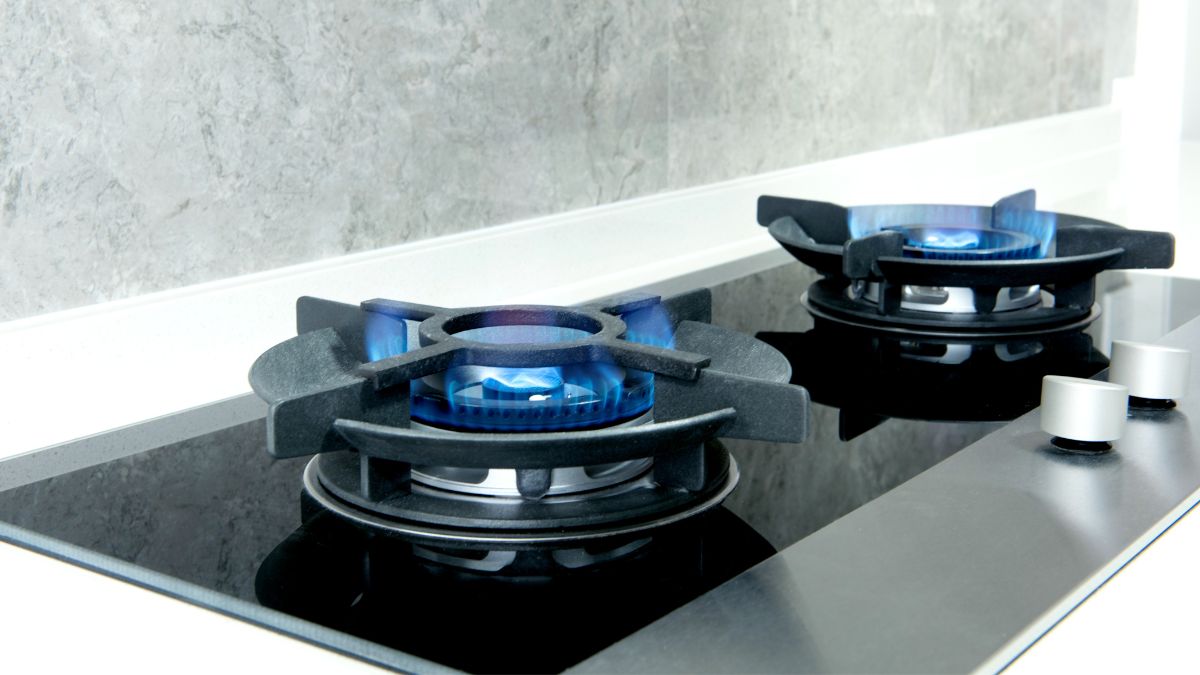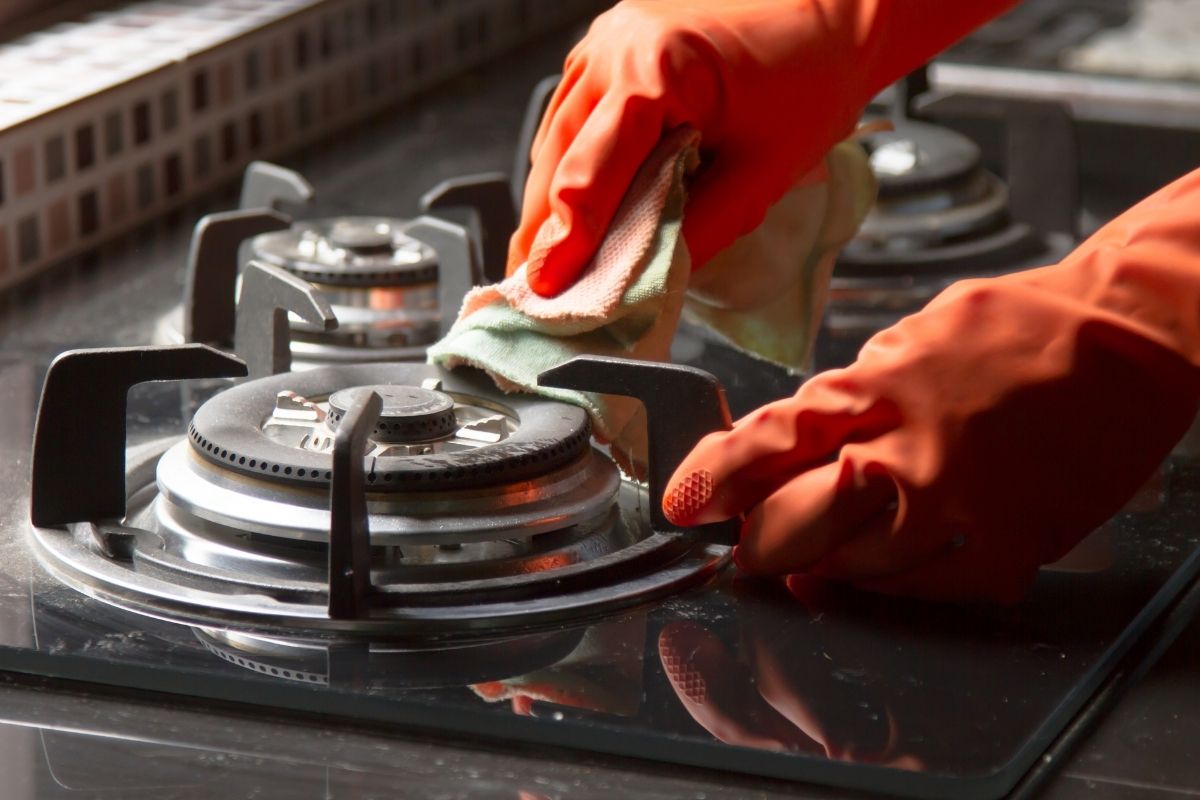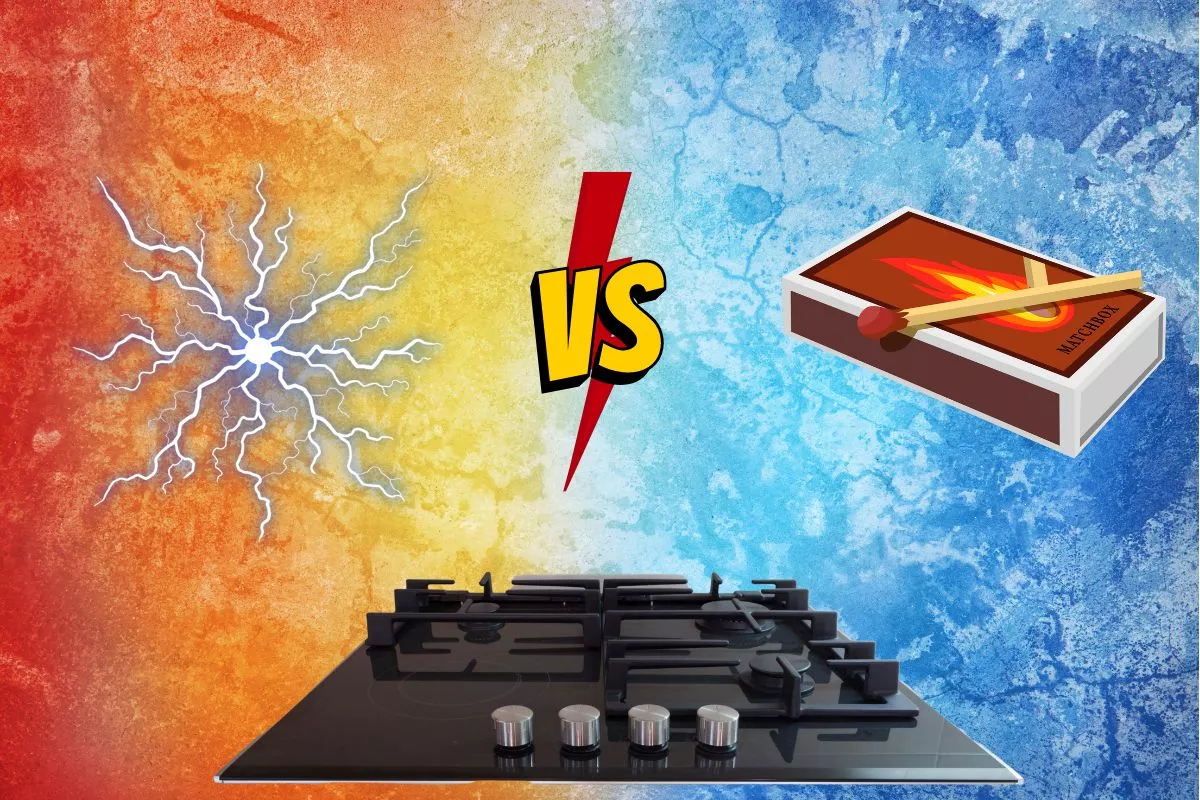
One aspect of cooking meals at home that has not seen significant changes over time is the type of gas stoves that we use at our homes. However, more recently we have started using some new types of stoves, among which the most convenient one being the auto-ignition stoves. These stoves are actually revolutionary as they light up automatically with just the press of a button as opposed to the manual lighting gas stoves for which you would have to keep a separate lighter to light it up manually each time. While the choice seems apparent right at the start, but there is a lot more to it that we are going to share in this blog so that you can find the right one for your kitchen.
How Auto Ignition Gas Stoves Work
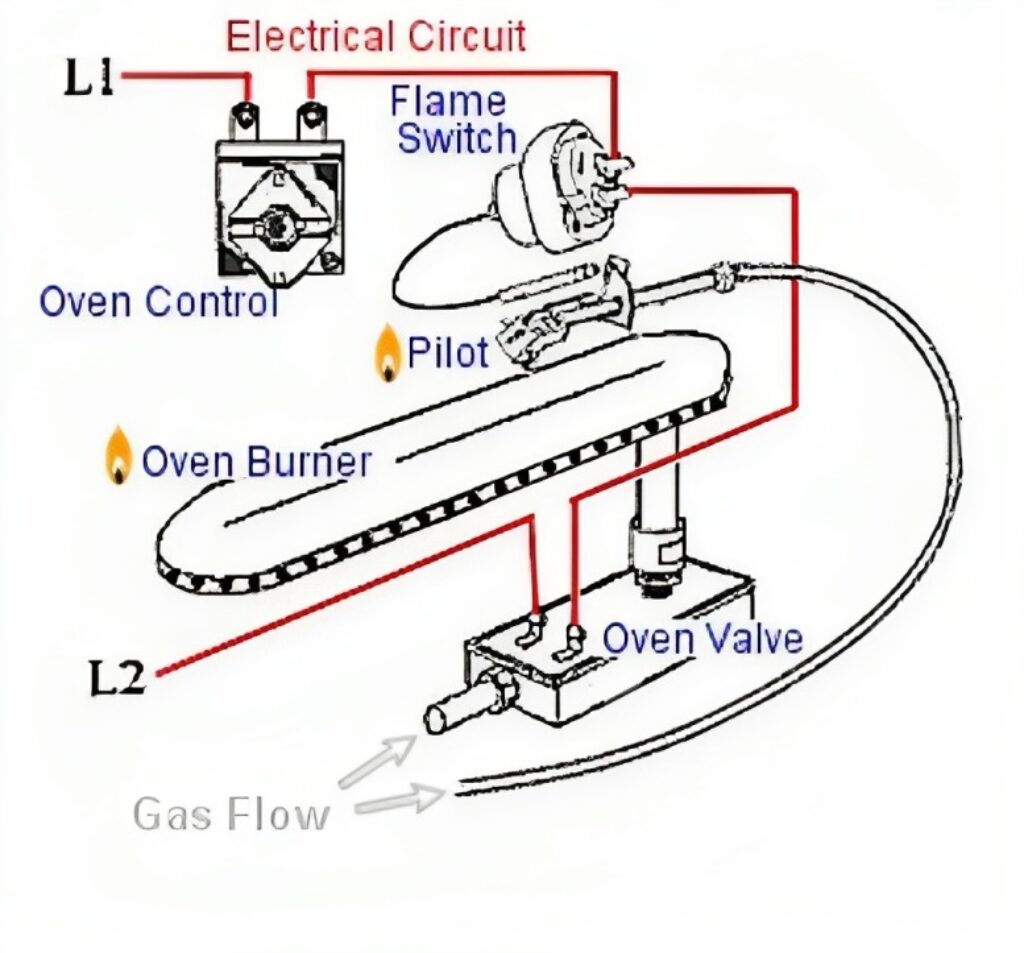
Image credit: appliance411.com
The automatic ignition gas stoves utilize electric or battery-powered ignitors to light the burners. A small igniter, like a spark plug, is located inside each burner and is connected to a battery or electric current. With the turn of a knob to release gas and press of the ignition button a spark is created at the igniter and lights the burner immediately without the need of matches or lighters.
Modern auto ignition stoves employ different types of ignition systems:
- Battery-operated: Using AA or AAA batteries to generate the spark ignition. These batteries need to be replaced regularly, often annually, or where igniting becomes difficult.
- Battery-less electric: Uses the household electrical current to lighten the burners. No replacement batteries costs. On the other hand, these models will not work during a power outage, unless they have a backup battery system.
- Piezoelectric: A spark is created by compressing the crystal inside the igniter. It does not require external electricity, or batteries. Mechanical compression gives the appropriate ignition spark.
In addition to ease of ignition, auto ignition stoves offer other advantages:
Ignition – they keep open flames away from the burners thus avoiding possible risks.
Cleanliness – no sooty buildup on burners from matches and lighters.
Wavering match flames cannot be replaced, but consistency – ignition spark is consistent.
Independence – Can light stoves own if live alone.
How Manual Gas Stoves Work
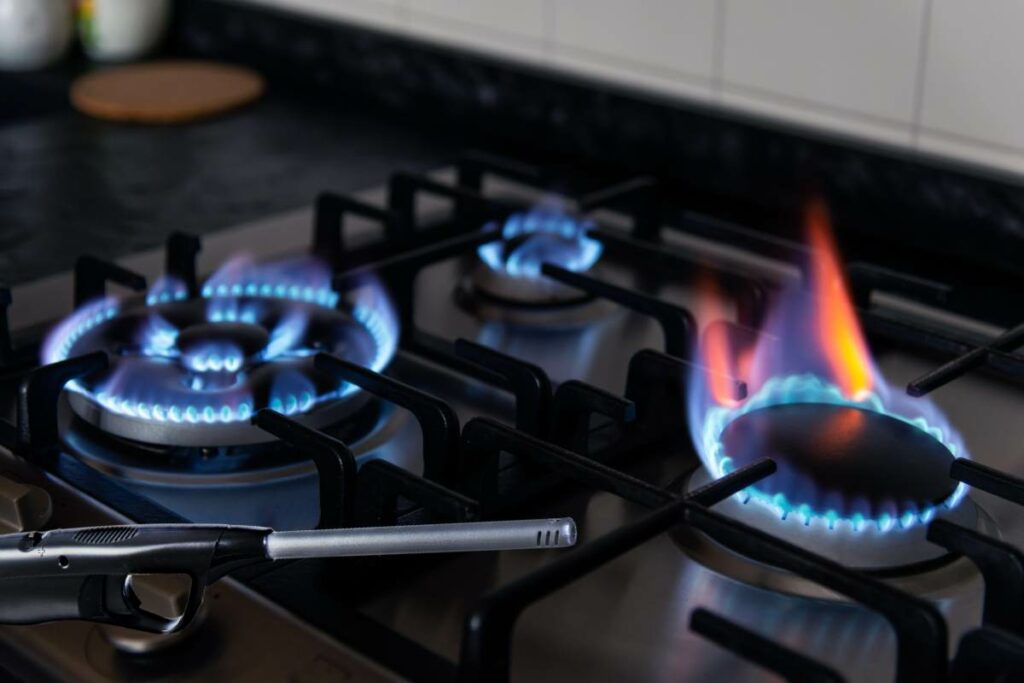
Manual gas stoves do not have automatic igniters installed. To light each burner, you must manually hold a lit match or lighter to the burner after turning on the gas. This basic, mechanical design requires no batteries or electricity to operate.
The process for lighting a manual gas stove is:
- Ensure all knobs are in the off position before starting.
- Select the desired burner and turn its control knob counter-clockwise to release gas.
- Strike a match and hold the flame near the burner.
- Slowly turn the knob further until the burner ignites.
- Adjust the knob to set the desired flame height.
- Repeat to light additional burners as needed. Don’t forget to turn off knobs when finished cooking!
While manual ignition stoves require a bit more effort to use, they have some advantages:
- Lower cost – Without electronics, manual models typically cost much less.
- Reliability – With so few parts, there is less to break or fail over time.
- Power outage use – Manual ignition still works when the electricity is out.
- Repairability – Fixing issues with the mechanical components is simple.
- Vintage appeal – Many appreciate the nostalgic design and operation.
If you don’t mind putting in a little extra work each time you cook, manual ignition stoves remain a viable option today.
Key Differences Between Auto and Manual Gas Stoves

Now that you understand how both auto and manual ignition models operate, let’s dive deeper into the key differences between them:
Ignition Method
- Auto ignition uses electronic push button igniters.
- Manual ignition requires lighting burners with a match or lighter.
Convenience
- Auto ignition offers exceptional convenience, lighting burners instantly at the push of a button.
- Manual ignition involves a bit more time and effort to light the stove each use.
Safety
- Auto ignition keeps open flames away for improved safety.
- Manual lighting introduces some safety risks having to use matches/lighters around burners.
Purchase Cost
- Auto ignition stoves are more expensive, starting around ₹2000 – ₹30,000.
- Manual ignition stoves are highly affordable, starting around ₹1,000 – ₹10,000.
Repair Costs
- Auto ignition repairs can average ₹1,000+ due to electronics and igniters.
- Manual ignition repairs are cheap, often under ₹300 for basic parts.
Reliability
- Manual models are extremely reliable with minimal components to fail.
- Auto ignition relies on electronics that can malfunction over time.
Power Outages
- Manual ignition stoves work fine without any electricity.
- Auto ignition only works during outages if using battery models.
Energy Efficiency
- Auto ignition stoves heat up burners quicker, using less wasted gas.
- Manual ignition may waste small amounts of gas during lighting.
Aesthetics
- Auto ignition stoves have a very modern, sleek look.
- Manual ignition stoves provide vintage charm.
As you can see from the differences, both auto and manual stoves have their respective pros and cons. You must decide which benefits fit your household’s needs.
Comparing Auto Ignition vs Manual Gas Stoves
To help summarize the differences between the two main types of gas stoves, here is a comparison chart:
| Feature | Auto Ignition | Manual Ignition |
| Ignition Method | Push button automatic igniter | Manual lighting with match/lighter |
| Convenience | Very high | Low |
| Safety | High – no open flames needed nearby | Mod |
| Reliability | Moderate – igniters can fail | High – simple and durable |
| Power Outages | Only battery models work | Yes |
| Energy Efficiency | Very high | Moderate |
| Aesthetics | Modern and sleek | Vintage style |
As seen in the comparison, auto ignition gas stoves excel in convenience, safety, and efficiency. The automatic push-button ignition is far easier than manual lighting. Open flames are also kept away from the burners, reducing safety risks.
However, the higher purchase price and potential repair costs of auto ignition stoves are downsides. And manual ignition stoves can be operated even in power outages when auto ignition models would be disabled (except battery powered ones).
Overall, most households prefer the ease and safety of auto ignition stoves. But manual ignition stoves can make sense for budget-conscious buyers less worried about convenience.
Key Factors to Consider When Choosing a Gas Stove
Beyond just the ignition type, several other factors should be considered when selecting a gas stove:
Number of Burners
Consider how many pots and pans you typically use when cooking meals. 2 burners are good for small households or those who don’t cook large meals. Families that cook big meals may prefer 4 or more burners.
BTU Power
Make sure the BTU ratings on the burners match your cooking needs. Larger burners with higher BTU outputs allow boiling large pots faster. Smaller burners are good for simmering or delicate cooking.
Size and Dimensions
Measure your existing kitchen space or cabinet cut-outs to ensure your new stove will fit properly. Gas stoves come in standard widths of 20-inches up to 36-inches wide.
Safety Features
Look for models with flame failure valves, residual heat indicators, oven door locks, and other modern safety enhancements. These provide protection for your family.
Extra Functions
Some gas stoves offer extras like griddles, warming drawers, or convection fans. Decide if any extra features will be worthwhile for your cooking.
Are Auto Ignition Gas Stoves Safe to Use?
Kitchen fires and gas leaks are certainly a concern when using any appliance fueled by natural gas or propane. However, when proper precautions are taken, modern auto ignition gas stoves are very safe for household use.

Here are some of the key safety enhancements found in auto ignition stoves:
- Flame failure safety shut off – If the burner flame happens to go out, the gas flow automatically shuts off to prevent gas leaks.
- Residual heat indicators – Glowing hot surface indicators let you know which burners are still hot to avoid burns.
- Sturdy grates and burner caps – Heavy grates and caps keep pots and pans stable and prevent spillovers.
- Secure oven racks – Oven racks lock securely in place when inserted to prevent slipping.
- Oven door latches – Latches keep the oven door safely closed. Prevents accidental opening and burns.
- Gas detectors – Some models have built-in gas detectors to alert of potential leaks.
- Child safety locks – Locks on the control panel disable the knobs to prevent children from turning on.
Auto ignition stoves also keep open flames away from gas releasing burners during ignition. This removes the open fire risks inherent with manual lighting.
Provided basic safety practices are followed, an auto ignition stove should provide years of safe, convenient cooking for your household.
How to Use an Auto Ignition Gas Stove Safely
While auto ignition stoves are designed to be very safe, there are still steps users should take to use them safely:
- Read manufacturer instructions – Follow the guidance in your model’s user manual for proper operation and maintenance.
- Annual leak checks – Have a technician inspect for gas leaks from connections and valves annually.
- Keep stovetop clean – Wipe up spills promptly to avoid grease fires. Clean burner caps regularly.
- Child supervision – Closely supervise any young children nearby the stove. Use child locks.
- Pot/pan stability – Ensure pots and pans used are steady on the grates and don’t tip. Use proper size burners.
- Don’t leave unattended – Stay near the stove when it’s in use to quickly handle any issues.
- Flame height – Adjust the flame only as high as needed for efficient cooking. Higher flames increase risks.
- Turn off when done – Make sure all knobs are turned to the off position after cooking is complete.
- Be prepared – Keep a fire extinguisher handy in case of grease/cooking fires. Have emergency numbers programmed.
- Ignition troubleshooting – If igniters fail, either replace batteries or contact repair service. Don’t try to manually light it.
Following basic kitchen safety practices like these will keep your auto ignition gas stove operating safely for years.
Burner Arrangements in Auto Ignition Gas Stoves
One decision to make when selecting an auto ignition stove is the number and arrangement of burners that suits your cooking needs. The common configurations are:
2 Burners
- Best for smaller households, couples, or singles
- Typically one small and one larger burner
- Limited cooking flexibility
- Most affordable two-burner option
3 Burners
- One small, one medium, and one large burner
- Allows using multiple pans more easily
- Balanced flexibility and affordability
- Well-suited for most general home cooking
4 Burners
- Often either two small and two large, or two small, one medium, and one large
- Maximum flexibility for simultaneous cooking
- Handled very large meals or batches efficiently
- Provides extra burner in case one fails
- Most expensive option but good for large families
5+ Burners
- Seen in luxury, pro-style gas stoves
- Maximum capacity for very heavy cooking usage
- Generally unnecessary for most households
- Very expensive and require extensive counter space
For most family households, a 3 or 4 burner stove offers the best flexibility and value. But assess your typical cooking load to determine if fewer or more burners are warranted.













